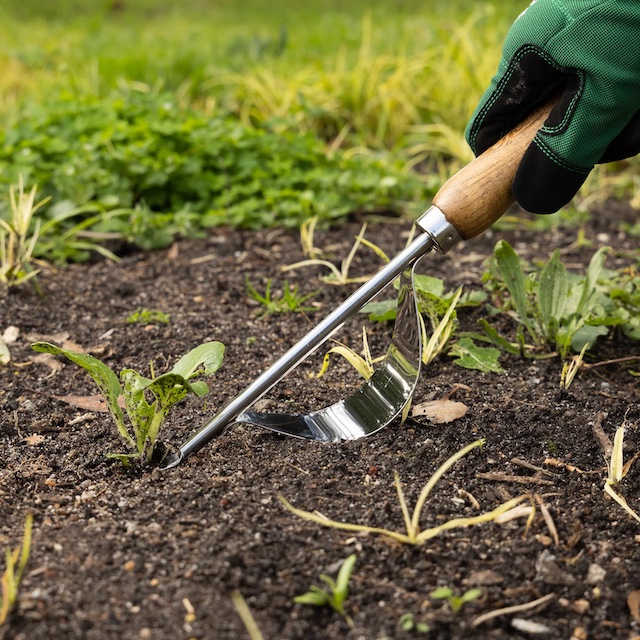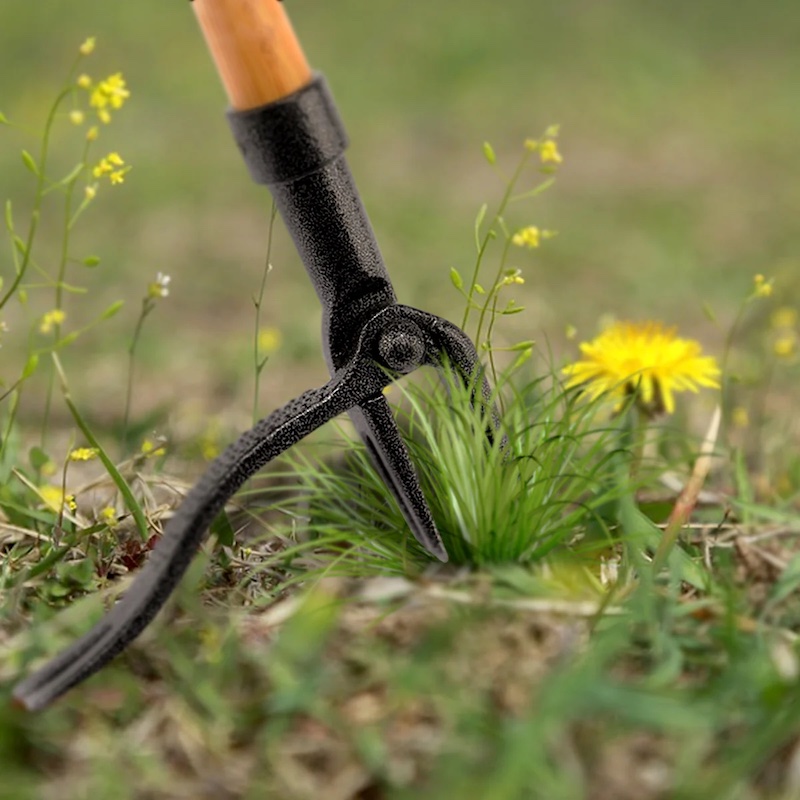Introduction
One of the main benefits of using a weeder is that it allows for efficient and targeted removal of unwanted plants. This can help prevent competition for resources and reduce the spread of invasive species, ultimately promoting the health of desired vegetation. Additionally, using a weeder is a more environmentally friendly alternative to using chemical herbicides, which can have negative impacts on surrounding plants and wildlife.
Weeder is a versatile gardening tool that can help you maintain your garden and keep it free from weeds. Whether you have a small backyard garden or a large plot of land, a quality weeder can make the task of removing weeds much easier and more efficient. In this blog post, we will explore the different types of weeders, how to use them effectively, and some tips for maintaining a weed-free garden.
Part 1: Understanding the Different Types of Weeders
Level 1: Handheld Weeders
Handheld weeders are small, handheld tools that are designed to remove individual weeds from the ground. There are several different types of handheld weeders, including fishtail weeders, dandelion weeders, and cobra head weeders. Each type of handheld weeder is designed for a specific type of weed and can be used to target weeds in tight spaces or between plants.
Level 2: Stand-Up Weeders
Stand-up weeders are long-handled tools that allow you to remove weeds from a standing position, reducing strain on your back and knees. These weeders typically have a sharp blade or claw at the end that can be pushed into the ground to grab hold of the weed and pull it out. Some stand-up weeders also feature a foot pedal that allows you to apply extra pressure to the weed for easier removal.
Level 3: Types of Weeders
There are various types of weeders available, including handheld tools with prongs or claws for precision removal of individual weeds, as well as long-handled tools with blades or hooks for larger, more widespread weed removal. Some weeders also come with ergonomic handles or other ergonomic features to reduce strain on the user’s body during prolonged use. Different types of weeders are suitable for different tasks and environments, so it’s important to choose the right tool for the job.
Part 2: Using Weeders Effectively
When using a weeder, it’s important to do so safely to prevent injury to yourself or damage to surrounding plants. This includes wearing appropriate protective gear such as gloves and eye protection, as well as being mindful of your surroundings and any nearby people or animals. It’s also important to use the weeder in accordance with the manufacturer’s instructions and to avoid overexerting yourself, especially when using long-handled tools that require physical exertion.
Level 1: Proper Technique
Using a weeder effectively begins with proper technique. When using a handheld weeder, it’s important to wear gloves to protect your hands and use the tool to dig deep into the soil around the base of the weed. For stand-up weeders, it’s important to position the tool directly over the weed and apply steady pressure to ensure the weed is fully removed from the ground.
Level 2: Timing Is Key
Timing is also an important factor when using a weeder. It’s best to remove weeds when the soil is moist, as this makes it easier to pull them out. Additionally, it’s best to remove weeds when they are small and have not yet gone to seed, as this can prevent them from spreading and proliferating in your garden.
Part 3: The Benefits of Using a Weeder
Level 1: Weed Control
One of the primary benefits of using a weeder is weed control. By regularly removing weeds from your garden, you can prevent them from competing with your plants for water, nutrients, and sunlight. This can help your plants to thrive and produce a better yield.
Level 2: Eco-Friendly
Using a weeder is also an eco-friendly way to control weeds, as it eliminates the need for chemical herbicides that can be harmful to the environment and wildlife. By using a weeder to manually remove weeds, you can maintain a healthy and sustainable garden without relying on harmful chemicals.
Part 4: Maintaining a Weed-Free Garden
Proper maintenance is essential for keeping a weeder in good working condition. This includes regularly cleaning the tool to remove any debris or sap that may accumulate and cause it to become less effective. Additionally, sharpening any cutting elements and lubricating moving parts can help ensure smooth and efficient operation. Storing the weeder in a dry, protected area when not in use can also help extend its lifespan.
Level 1: Regular Inspections
To maintain a weed-free garden, it’s important to regularly inspect your garden for any signs of weeds. By catching weeds early, you can prevent them from spreading and taking over your garden.
Level 2: Mulching
Mulching your garden can also help to prevent the growth of weeds. By adding a layer of mulch around your plants, you can smother any potential weeds and prevent them from sprouting.
Part 5: Tips for Choosing the Right Weeder
Level 1: Consider Your Garden Size
When choosing a weeder, it’s important to consider the size of your garden. For smaller gardens with tight spaces, a handheld weeder may be more practical. For larger gardens, a stand-up weeder with a long handle can make the task of removing weeds much easier.
Level 2: Quality Matters
It’s also important to invest in a high-quality weeder that is durable and built to last. Look for weeders made from sturdy materials, such as stainless steel, and consider the warranty and customer reviews before making a purchase.
Part 6: Weeder’s User-Friendly Design
Level 1: Easy to Use
Weeder is designed with the user in mind, making it easy for anyone to operate. Its intuitive controls and simple interface allow for seamless operation, making it suitable for both experienced and novice gardeners. The user-friendly design ensures that anyone can effectively weed their garden without any special training or expertise.
Level 2: Ergonomic Features
In addition to being easy to use, Weeder also prioritizes user comfort. Its ergonomic design reduces strain on the user’s hands and wrists, allowing for extended periods of use without discomfort. The lightweight construction and balanced weight distribution further ensure that using Weeder is a comfortable and enjoyable experience for all.
Part 7: Versatile Application
Level 1: Compatible with various garden types
Weeder is not limited to a specific type of garden but is versatile enough to be used in various settings. Whether you have a small backyard garden, a large vegetable plot, or a landscaped yard, Weeder is adaptable to different terrains and garden layouts. Its versatility makes it a valuable tool for any gardener looking to maintain a weed-free garden.
Level 2: Multi-functional Design
Weeder is more than just a weeding tool; it also serves multiple functions in the garden. Its sharp edges can be used for precision planting, cutting through tough roots, or cultivating the soil. With its multi-functional design, Weeder offers a range of uses that make it an essential tool for any gardener.
Part 8: Environmental Benefits
Level 1: Chemical-free weeding
Using Weeder in the garden eliminates the need for chemical weed killers, reducing the use of harmful substances in the environment. By opting for a natural and manual weeding method, gardeners can contribute to a healthier ecosystem and reduce their environmental impact. Weeder promotes sustainable gardening practices by providing a safe and eco-friendly alternative to chemical weed control.
Level 2: Weed Prevention
In addition to removing existing weeds, Weeder also helps prevent the spread of new weeds. By regularly using Weeder to uproot young weeds before they mature and scatter seeds, gardeners can effectively control the weed population in their garden. This proactive approach to weed prevention contributes to a healthier and more vibrant garden environment.
Conclusion
Weeders can also be categorized based on their method of weed removal. Some weeders rely on mechanical means, such as blades, disks, or tines, to uproot or cut off weeds from the soil. Others use chemical means, such as herbicides or pesticides, to kill the weeds without harming the main crops. There are also thermal weeders that use heat to kill weeds, and electric weeders that use electricity to kill weeds.
In conclusion, using a weeder is an effective way to maintain a weed-free garden and keep your plants healthy and thriving. By understanding the different types of weeders, using them effectively, and following some maintenance tips, you can enjoy a beautiful and sustainable garden all season long. When choosing a weeder, be sure to consider your garden size and invest in a high-quality tool that will make the task of weed removal much easier. With the right weeder and some regular maintenance, you can enjoy a lush and weed-free garden for years to come.





